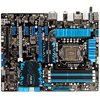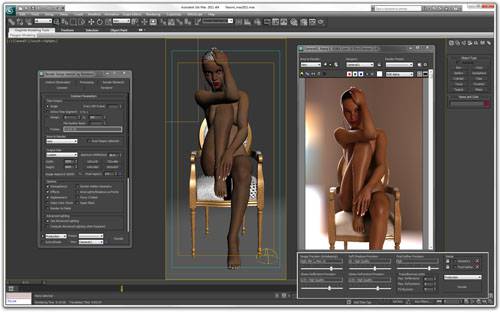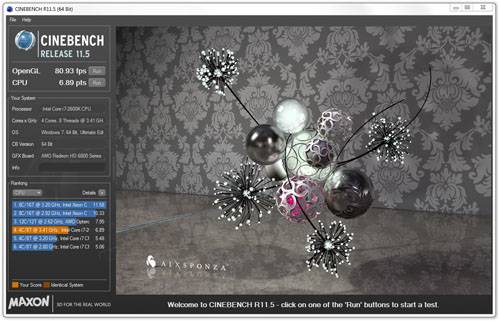- Qualcomm Launches Snapdragon 4 Gen 2 Mobile Platform
- AMD Launches Ryzen PRO 7000 Series Mobile & Desktop Platform
- Intel Launches Sleek Single-Slot Arc Pro A60 Workstation Graphics Card
- NVIDIA Announces Latest Ada Lovelace Additions: GeForce RTX 4060 Ti & RTX 4060
- Maxon Redshift With AMD Radeon GPU Rendering Support Now Available
ASUS P8Z77-V DELUXE Motherboard Review

Want a motherboard that won’t have you wishing you chose differently? There are plenty of reasons why ASUS’ P8Z77-V DELUXE deserves your consideration. It’s a feature-packed board that gives you everything you’d hope for in a motherboard – and then throws in some extra for good measure.
Page 5 – Overall System: Autodesk 3ds Max 2011 & Cinebench R11.5
Autodesk offers a mind-blowing number of software production tools, but for those who are looking to build complex 3D models and scenes, it’s 3ds Max that stands at the forefront. First launched in 1995 as ‘3D Studio Max’, the program has since become a standard within some important industries, including architecture design, gaming development and film production.
For our test, we render a scene commissioned from Bulgarian artist Nikola Bechev, entitled “Naomi: The Black Pearl”. The woman is comprised of over 7,000 polys with the entire scene totaling just over 106,000 vertices. Three light sources are used, with the entire scene being enhanced with HDR and ray tracing techniques, and subsurface scattering applied to certain objects. The scene is rendered at 1800×3600 as a production release, with HQ detail levels being used all-around.

Both ASUS and MSI once again came out even.
Cinebench R11.5
Like Autodesk’s 3ds Max and Maya 3D tools, Maxon’s Cinema 4D is a popular cross-platform 3D design tool that’s used by new users and experts alike. Maxon is well-aware that its users are in need of some rather beefy PC hardware to help speed up rendering times, which is one of the reasons the company itself releases its own benchmark, Cinebench.
There are a couple of reasons we like to use Cinebench in our testing. For one, it’s freely available for anyone to download, unlike our Autodesk-based tests. Second, it has the capability to scale up to 64 threads, which means we’ll easily be able to rely on it until the next version hits. As a faster CPU can also help improve the GPU computational pipeline, we also like that it includes an OpenGL benchmark as well. The fact that the benchmark completes in mere minutes is another perk.

Interestingly, while ASUS and MSI evened out in the previous test, it was ASUS that took the lead here – at least in the CPU test; the OpenGL result is even.
Support our efforts! With ad revenue at an all-time low for written websites, we're relying more than ever on reader support to help us continue putting so much effort into this type of content. You can support us by becoming a Patron, or by using our Amazon shopping affiliate links listed through our articles. Thanks for your support!







